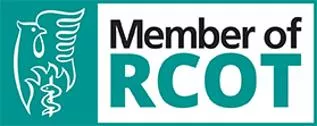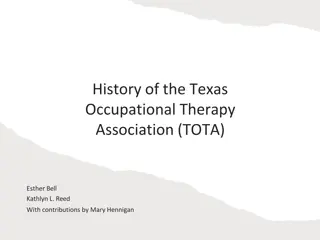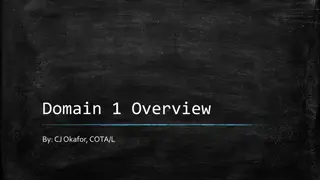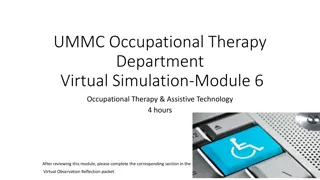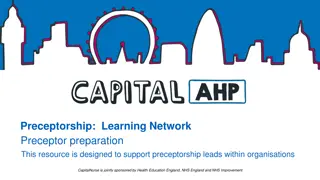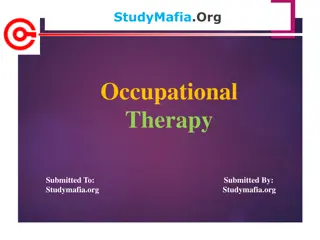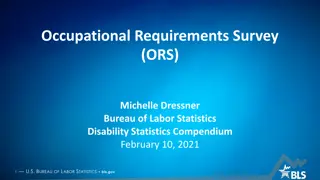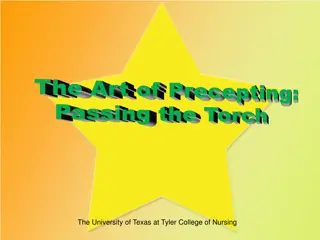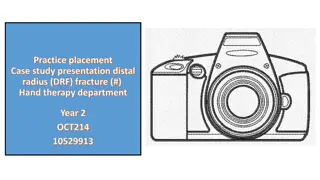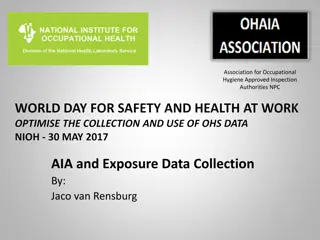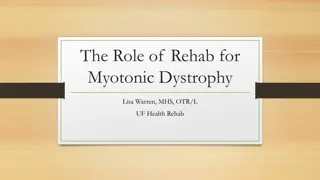Occupational Therapy Preceptorship Programme Overview and Response to COVID-19
This document outlines an Occupational Therapy Preceptorship Programme by N. Chappell, focusing on tasks and objectives for preceptees. It describes the annual fixed resource session at the University of Brighton, task categories, E-workbook usage, appraisal objectives, and monthly forums. Additionally, it covers the adjustments made in response to COVID-19, such as virtual forums and modified tasks for remote observation. The revised tasks include clinical note reviews, communication skills assessment, and positive risk-taking evaluations. The programme aims to support preceptees in their professional development and integration into the occupational therapy profession.
Download Presentation

Please find below an Image/Link to download the presentation.
The content on the website is provided AS IS for your information and personal use only. It may not be sold, licensed, or shared on other websites without obtaining consent from the author. Download presentation by click this link. If you encounter any issues during the download, it is possible that the publisher has removed the file from their server.
E N D
Presentation Transcript
Occupational Therapy Preceptorship Programme N. Chappell OT-PE V4 April 2021 (R/V by preceptorship forum, 2021
The Preceptorship Programme Overview A protocol was created exploring the evidence base for preceptorship and explaining the preceptorship process. An annual fixed resource session is completed at the University of Brighton for preceptorship. Tasks were identified from existing evidence base and utilised generically to fit all services: Task 1; Working with clients and groups (observational tasks covering the whole OT Process) Task 2; Working with colleagues and other agencies (observational tasks working with MDT and also with external agencies for promotion of occupational therapy profession) Task 3; Written communication (clinical notes-one early days, one two months later) Task 4; Using local clinical policies relating to working practice (regarding risk management) (derived from Morley, M. (2012) Preceptorship handbook for occupational therapists. 3rd Ed. London: College of Occupational Therapists) E-workbook & E-reflection booklet (preferred reflection cycle) created and provided Monitored for standardisation by OTPE Observer providing immediate verbal feedback and written feedback within e-workbook (task 1&2) Appraisal objectives identified (pre-populated Appraisal document provided to each supervisor) Timeline provided which linked into probation period-allowing time to identify learning needs and develop these A certificate is provided as further evidence of completion. Monthly forums were held in small groups, grouped geographically to reduce feelings of isolation, to promote a cohort and peer group during the process and towards full integration. The precetee should aim to complete the tasks within 3 months, however the transition period is a whole year.
Response to COVID-19 At ESHT we reviewed our preceptorship programme to make it more accessible virtually. Direct supervisors are now observing the preceptorship tasks rather than OTPE-a manual and forum was created and is available to supervisors, with an introductory video explaining the process Tasks have slightly changed to allow for less contact time Virtual preceptorship forums (cross site) via MS Teams as a whole group, increasing awareness of colleagues cross site. ESHT Preceptorship Tasks Task 3 involves two sets of the precetees clinical notes, one at the start the post and another in two months time. The preceptee can compare their progression and write a reflection about this and what to include in each section. Task 1 is an observational task focusing on the whole OT process across two occasions. Task 2 is an observational task focusing on the preceptees written and verbal communication skills with agencies/other professionals. This includes following the discharge pathway and referring on to other services, plus liaising with the clients family/carers and ward staff (2a). The preceptee will also be observed when feeding back their findings or interventions during ward round to other MDT members (2b). Task 4 is about positive risk taking and linking this to local policies and guidance. Preceptees will be asked to complete a case study presentation to the preceptorship forum via Teams about positive risk taking. Preceptees will also complete a reflection about positive risk taking, how this makes preceptees feel and how preceptees will manage their personal feelings about this moving forwards.
Outcome measures On completion, a debrief session is held within the forums to allow the cohort to provide positive and negative feedback asking specific questions- Introduction to the process; Observation Process; Paperwork Process; Preceptorship Forums. Exit interviews are also completed. Changes made in response Changes were made to the programme based on each cohorts feedback-cohorts were notified of changes made to reinforce confidence in providing feedback and further create a positive culture which responds proactively. Examples include: Adding a checklist to the front of the e- workbook to clearly show progress at a glance Increased accessibility to forums Separate e-workbook and e-reflection booklet to increase privacy on reflection (shared with OTPE) Providing protocol as early as possible to new recruits-expectations and preparation prior to commencing role The main themes that emerged from 3 cohorts were: Preceptorship resources/tools (+/-) Expectations [preceptee/supervisor] (+/-) Isolation/inclusion (+) Confidence/perceived ability (+) Service Resources [time/caseload] (-) Supervisors themes included: Preceptees have increased confidence Improved consistency in standards Improved practice Difficult conducting process with direct supervisors-time Supervisors MS Teams channel helpful Moving Forwards we would like to identify and learn more robust ways of measuring the effectiveness of the programme





